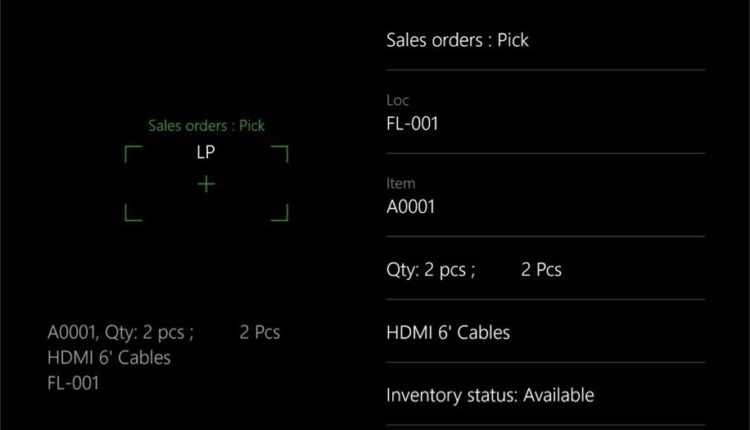If you’re responsible for the smooth operation of warehouse operations across your organization, you know that managing inventory, machines, people, and resources efficiently while meeting tight delivery deadlines means that you need to have resilience in your supply chain. To help companies like yours execute mission-critical manufacturing and distribution processes without interruptions, we recently announced a preview for cloud and edge scale unit add-ins for Dynamics 365 Supply Chain management.
So how can your company benefit from cloud and edge scale units? One effective tactic is to place scale units near the location where production work is donewhether that’s in the cloud or right inside the four walls of the warehouse facility. That way, you can take advantage of the dedicated capacity that scale units provide.
Monogram Foods Solutions is a leading manufacturer and marketer of value-added meat products, snacks, and appetizers. Their team is participating in the preview. As noted here, they’re having great success with scale units:
“Our frozen goods warehouse has a tighttime constrained picking process, and it is critical for our warehouse team to have a consistent and reliably quick response throughout the entire picking operation. The architectural design of the solution ensures that these critical warehouse workloads are isolated from the rest of our operations, eliminating points of contention during these time-sensitive processes.”
Transition to workloadsforresilientwarehouseexecution
You can find more information about what scale units are and how to set them up for the warehouse executionworkload inthe documentation.In this blog post, we’re going to take a deeper look into how to implement dedicated scale units.
With theworkloadforwarehouseexecution,you cantransition theexecution phase of warehouse processes intodedicatedscale units.The workload definesthescopeof business processes, data, andpoliciesincluding rules, validation, and ownershipfor what runs in thescale unit.Inbound, outbound, and otherwarehouse management processeshave beensplit into decoupled phases for planning, execution, receiving, and shipping.
After you configure the workload, the workers on thewarehousefloorcontinue to go through the work,like choosing the mobile warehousemanagement experience,connecteddirectlyto thededicated processing capacity in thescale unit.

Hybrid multi-node topology makes it all work
Inthehybridmulti-node topology,individual nodes are responsiblefor pieces in the distribution processes.The hub supports data management, warehouse process management, and release of orders to the warehouseand as well as some finalization steps, depending on the scenario.
For inbound warehouse processes, the responsibility of the workload on the scale unit beginswhen thepurchasing agentreleasespurchase ordersto the warehouse.Itusesrecordsofthe newtype ofwarehouseordersto trigger theworkforthe warehouseclerkson thefloor.

A copy of the relevant inventoryisavailable on the scale unit and isconstantly keptin syncwith the central inventory. For temporarily disconnected edge scale units, this local inventory acts as alocal cache, so the warehouse workercancompletework like put-away,independentlyof thescale unit.
As soon as warehouseworkershave completedatask, the cloud hub runs thenext steps.In the public preview,thisincludesthe generation of thereceiptsfor the receiving process.The transition happensinstantaneouslyifthe (edge) scale unithasconnectivity.
Sales clerksfindsupportinoutboundwarehouse processeswhenreleasingsales orders to the warehouse.Theworkload in thescale unit will apply the relevantwave processing methodandwarehouseworkerswillperformtaskslike picking.From there,theshipping processwilltakeover. Tasks likethe packing slip generation willstill continue onthe cloud hubin the previewversion.

The workload for warehouse execution supports additionaloperations that runfullyon the scale unit.Warehouse workers caninquireaboutitems,itemlocations,and license plates,as well as moveitemswithinthe warehouse.

Take away: Scale units help you to build resilient warehouse execution
Dynamics 365 Supply Chain Management transitions to a multi-node supply chain topology. This allows customers to build resilience by deploying scale units in the cloud or on the edge with built-in redundancy and flexible management.
The warehouse execution workloads in the public preview show how business processes support resilience in this hybrid multi-node topology for supply chain management. Microsoft will continue finetuning the responsibilities of workloads in scale units based on customer feedback to address the most common use cases out of the box.
In the upcoming Spring release updates, you will find several important enhancements. Warehouse workers in outbound scenarios can perform simple picking and loading work for transfer orders on scale units. Label printing will be available on scale units, including support for wave labels. Further enhancements include cluster picking, wave processing for shipments, change of workers, cancelation, location movement, and completion of work for sales and transfer orders.
Nextsteps
Learn moreabout cloud andedgescaleunits and other important topics in the documentationfor Dynamics 365 Supply Chain Management.
The post Robust warehouse execution with Dynamics 365 Supply Chain Management appeared first on Microsoft Dynamics 365 Blog.
